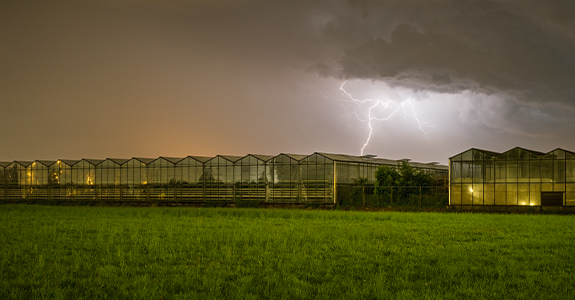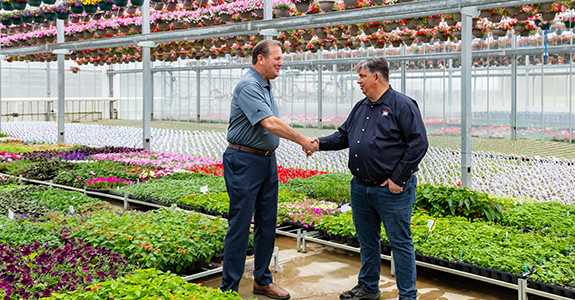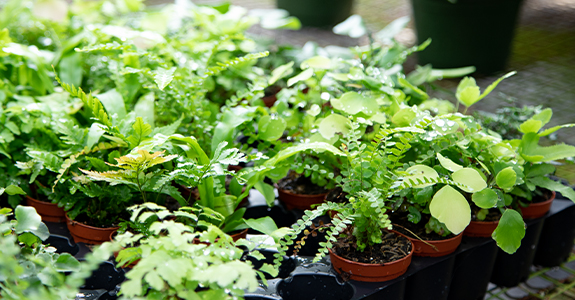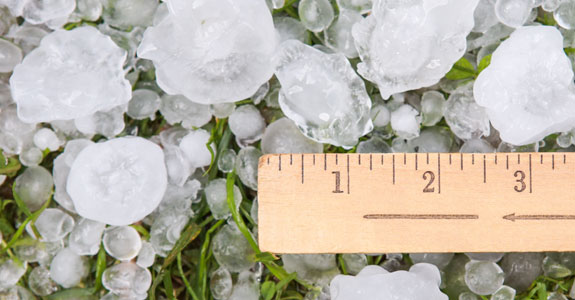Prep your horticultural business for natural disasters

No matter where your business is located in the U.S. you’re at risk for a natural disaster or severe weather event—and that risk is growing.
Climate change, rising property values, and inflation are among the reasons experts cite for more billion-dollar weather events. The number of such events has nearly doubled in the last 12 years, up to 28 in the last year.
According to the National Oceanic and Atmospheric Administration, through May 2024, there have already been 15 such events in the U.S. These include snowstorms, cold snaps, tornadoes, derechos, and hailstorms.
Natural disasters can strike without warning. Developing a preparedness plan, educating your employees, maintaining your structures, and updating your insurance coverage all help ensure your business can continue operations after a natural disaster.
Establish a weather emergency plan
To create an effective and sustainable emergency plan, start by building a well-rounded preparedness team. Select employees from across your organization, including supervisors and representatives from all shifts and roles.
Sit down with your team and develop a step-by-step plan for pre- and post-storm damage control. Designate specific people for tasks and ensure everyone understands their role. Don’t forget backup plans for long periods of time without power. Have items such as generators and fuel at the ready.
The U.S. Department of Homeland Security provides a good starting point in developing a response and recovery plan. Tailor your plan to fit your business and your unique operations.

Educate your employees
Once you’ve developed a plan, review and update the plan with your employees on an annual basis. Most importantly, conduct emergency drills that follow your plan to identify gaps and get workers used to the routine.

Create a safety map
As part of this plan, create a map that identifies fire extinguishers, emergency exits, storm shelters, and other important locations such as pesticide and chemical storage areas.
Your insurance company can help you in this process since they’re already familiar with your operations.
With Hortica®, our safety services team can help you develop an emergency plan, conduct training, and provide educational resources.

Develop an emergency contact list
Gather contact information for any person or organization that can help in the aftermath of a storm.
Make sure the list includes your insurance agent. They can talk you through the next steps and provide valuable input about how to file a claim and document damage.
Inspect and maintain your structures
Conducting regular inspections and maintenance on your structures—such as greenhouses, storage sheds, and retail shops—helps increase their longevity and protect your crops, equipment, and inventory stored inside.
Regular maintenance can also help mitigate damage from hail, high winds, and heavy rain. This is especially important now, as the cost of materials and labor continues to rise due to inflation, supply issues, and worker shortages.
Your maintenance routine should encompass a wide range of tasks, including regularly securing materials such as loose clips, bar caps, and roofing tiles. Don’t forget the trees on your property—remove loose, weak, or low-hanging branches, which could break away in high winds.
Review your insurance policy annually
Your horticultural business is ever-changing, and your insurance policy should reflect those changes. For instance, if you build a new greenhouse on your property, make sure it’s added to your policy. It is crucial to ensure your insurance coverage aligns with your business's evolving assets.
Preparedness is the key to mitigating losses related to natural disasters and severe weather. With proper planning and execution, your business can continue to thrive as the risk of climate-related disasters continues to grow.

Choosing an insurance provider for your horticultural business

Debunked: Five common myths about horticultural insurance

Help protect your horticultural business from hail damage
The information in this article is for informational or entertainment purposes only. View our disclaimer by going to terms and conditions and clicking on Learning Center disclaimer in the table of contents.


